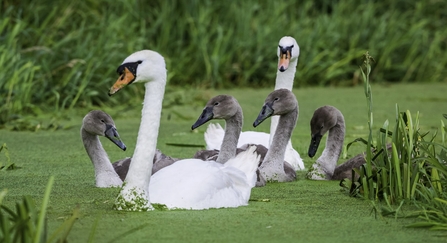In today’s hectic world, you can be forgiven for feeling a bit cynical about Valentine’s Day. If like me, you’re bombarded with marketing emails and social media advertising from New Year’s Day, it can become a bit of a headache. But, as is so often the case, looking to nature can provide some perspective, relief and interest when it comes to forming partnerships.
There are all kinds of partnerships in nature, just like there are lots of different types of relationships for humans. Some of these partnerships we’re only just beginning to understand, but others can feel very relatable to us, and one of those is the mute swan.
Mute swans can be found on large bodies of water around the UK and are a fairly common site for many of us. Their crisp white plumage and distinctive orange beaks mean they’re hard to miss and to see them dancing is one of nature's real treats.
A swan’s dance is a mating ritual, and it involves the swans bobbing, stretching and intertwining their long necks as they circle each other in the water, often forming a heart shape with their head and neck – the very picture of romance!
But like any great date, it’s not all just for show. Mute swans mate for life and each year will perform a dance with their partner as way to reconnect at the beginning of the breeding season.




